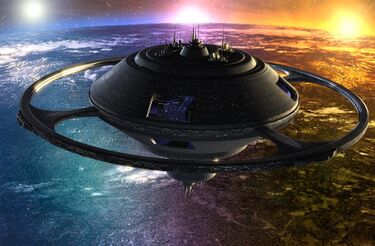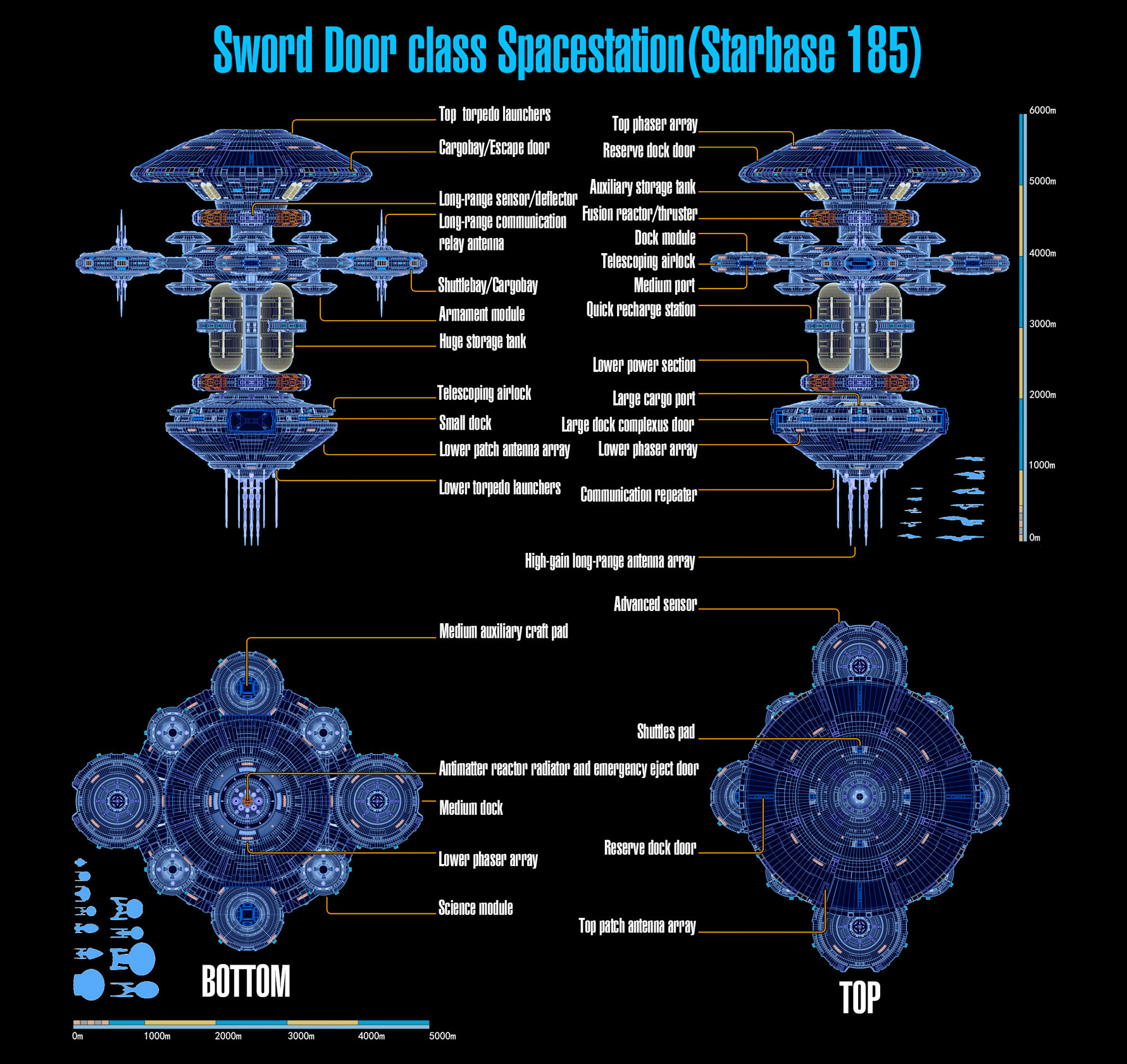Aurora Class

| |
| Aurora-class | |
| Information | |
| Affiliation |
Starfleet |
| Role |
Spacedock |
| Date Entered Service |
2298 |
| Expected Design Duration |
100 years |
| Expected Refit Cycle |
30 years |
| Population | |
| Standard Complement |
5,000 |
| Civilian Residents |
15,000 |
| Maximum Population |
75,000 |
| Dimensions | |
| Diameter |
3290 meters |
| Height |
1635 meters |
| Propulsion | |
| Propulsion System |
24 manuvering thrusters |
| Armaments | |
| Energy Weapons |
30 Type-XII phaser arrays |
| Torpedo Launchers |
24 Torpedo Launchers
|
| Torpedo Payload |
|
| Shields |
Standard Deflector Shields |
| Docking Facilities | |
| Docking Facilities |
Spacedock
Habitat Ring
|
| Shuttles |
48 |
| Runabouts |
16 |

| |
| Template:StationSpecifications | |
The Aurora-class spacedock is the smallest class of spacedock in Starfleet service. Though it dwarfs the largest non-spacedock station classes, it is less than half the size of the original Spacedock-class and it is intended to serve in areas that need the support of a spacedock but where one of the larger stations is unnecessary.
Class Overview
With the Earth Stardock almost completed, Starfleet began to realise a significant problem: the Spacedock-class was costly to build, in resources and time. If Starfleet was going to continue production of these, they had better find more resources. The answer was reached, when the R&D teams proposed the Aurora-class. This starbase, though smaller then the Stardock, would be able to support as many ships, and provide a solid defense for a planet, system or sector, while carrying out all operations starbases usually carry out.
Because of the size of the station, which was almost half that of their Spacedock-class counterparts, the interior space of the starbase was doubled by adding more doors, and also larger inner towers for placement of the necessary facilities. This way, it could be built faster, yet have the same abilities of the Spacedocks.
One of the other improvements of the Aurora-class was an outer ring, which held some smaller shuttle bays, and pads, and also held residential areas. The ring area, later dubbed the “Habitat Ring” also had infirmaries, and recreational facilities such as gymnasiums, dojos, and replimats. Also, some scientific facilities where placed here as well. This design would again allow for more space inside the starship bay.
The main section of the starbase, held the Starfleet facilities, and even more residential areas. Mostly, the inner station remained a spaceport, with a mall, flight control “towers”, and observation lounges. In all, the station was a success. Starbase 102 was the first. By the time these where done however, Starfleet had gathered enough resources to continue production of the Spacedock-class. The Aurora was still used, though more were only built in few numbers, since it lacks the same tactical and logistical abilities that the Spacedock-class possesses.
When the Federation came under a rapid expansion, these stations were again looked at. While small and not able to house larger ships internally, the Aurora-class still had use as a front-line station where smaller ships could be produced and launched. Other advancements over the years, and the addition of new technologies, kept the design current, but underused. Eventually, a larger variant was designed, but this venerable design has withstood criticisms of being too small, but still showing that its design philosophy of smaller, yet capable is still going strong, almost 100 years after its first roll-out.
